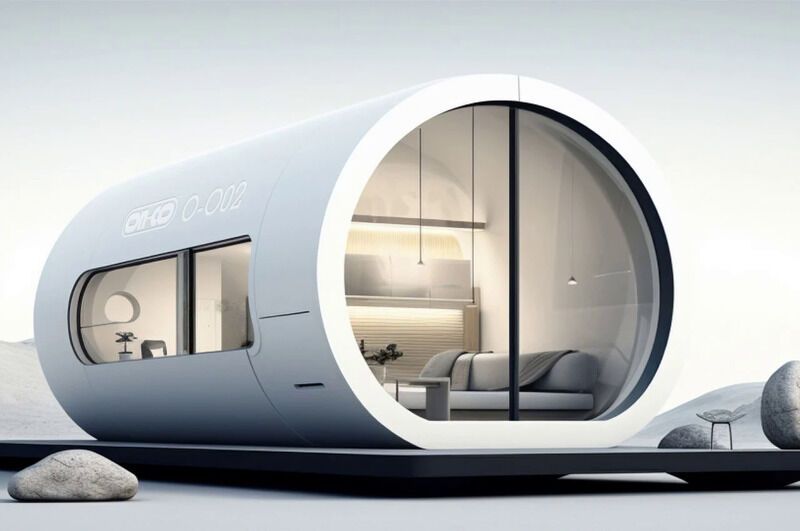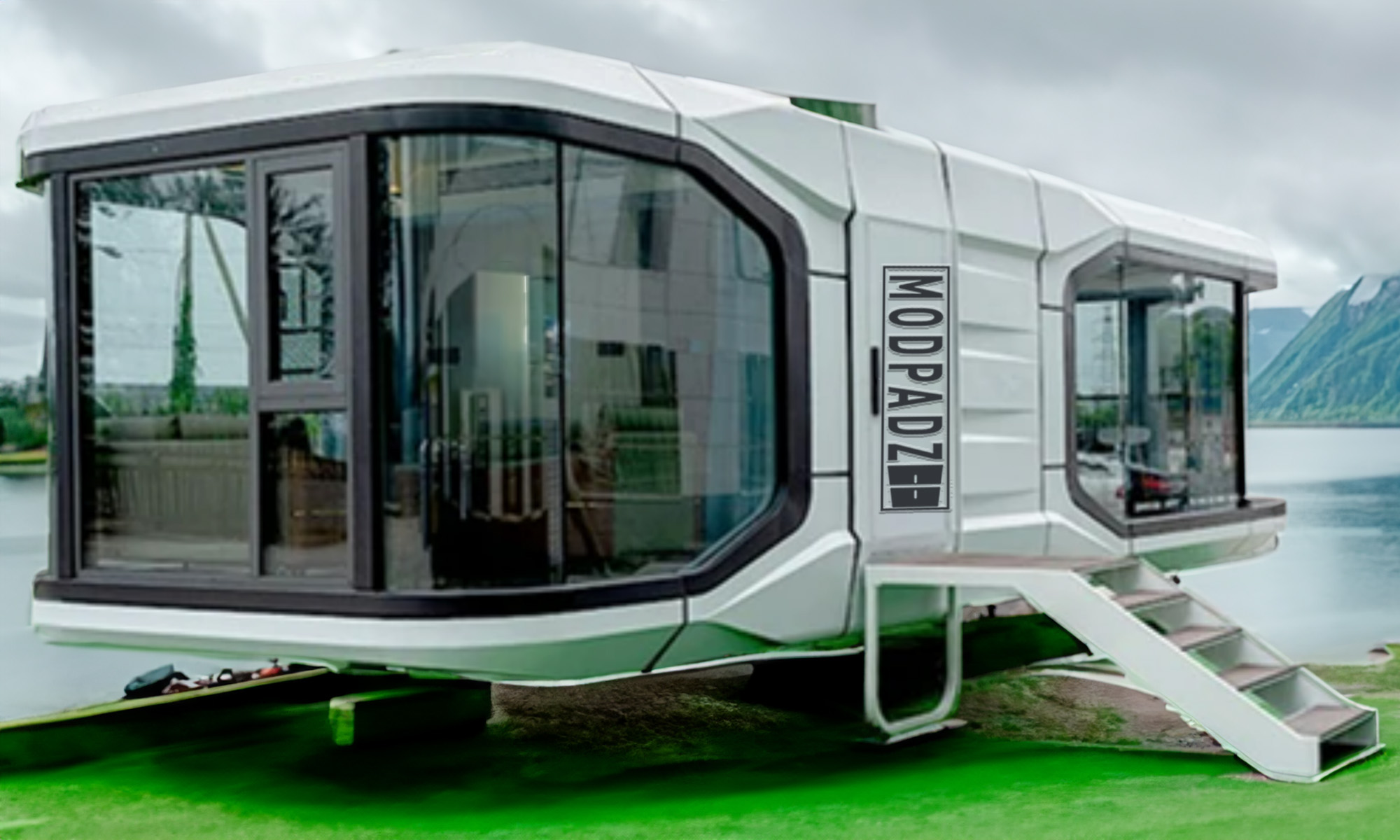Why Capsule Houses Are Gaining Popularity as a Compact Housing Solution
Why Capsule Houses Are Gaining Popularity as a Compact Housing Solution
Blog Article
Why Modular Residences Are the Future of Sustainable Living
Modular homes are significantly acknowledged as an essential solution for lasting living, offering a blend of performance, cost-effectiveness, and environmental advantages. Their building in regulated atmospheres considerably lowers waste and enhances accuracy, while the possibility for including advanced energy-efficient systems places them as a forward-thinking alternative in housing. Additionally, the flexibility of modular designs enables for the combination of sustainable modern technologies and materials tailored to private requirements. As we browse the challenges of urbanization and environmental sustainability, one need to take into consideration just how these homes might redefine our strategy to living rooms.
Environmental Benefits of Modular Houses
The environmental benefits of modular homes stand for a substantial action toward lasting living. These homes are built in regulated manufacturing facility setups, which substantially minimizes waste created throughout the structure procedure. By enhancing materials and reducing excess, modular construction adds to a more efficient usage of sources contrasted to conventional structure techniques.
Furthermore, modular homes are commonly made with energy efficiency in mind. Many integrate sophisticated insulation strategies, energy-efficient home windows, and sustainable materials, adding to reduced power usage. This can result in reduced greenhouse gas emissions over the life expectancy of the home, enhancing its overall environmental account.
The capability to transport and construct modular elements on-site also minimizes the carbon impact related to construction logistics. Several modular homes are developed to be quickly upgradeable and adaptable, permitting property owners to apply lasting innovations, such as solar panels and energy-efficient home heating systems, over time.
Ultimately, the ecological advantages of modular homes not only promote lasting living but likewise urge a more liable technique to real estate development, lining up with international initiatives to deal with environment change and maintain all-natural resources for future generations.
Cost-Effectiveness and Cost
Structure a home often represents among the largest economic investments people make in their lifetime, and modular homes provide a compelling remedy for those looking for cost-effectiveness and affordability. One of the key advantages of modular homes is their lower building and construction prices compared to standard site-built homes. The streamlined manufacturing process enables considerable financial savings on labor and materials, which translates to lower costs for consumers.
Additionally, modular homes commonly have much shorter construction timelines. This not just lowers expenses connected to financing and insurance coverage however additionally reduces the risks associated with inflation and fluctuating market problems. Several customers locate that modular homes can be tailored to fit their budgets without giving up quality or design.
Moreover, power performance is often developed into the layout of modular homes, leading to lowered utility costs gradually. Numerous manufacturers focus on sustainable materials and practices, better boosting the long-lasting monetary feasibility of these homes. In general, the combination of first price savings, quick building, and ongoing power effectiveness makes modular homes an eye-catching alternative for those seeking to buy lasting living without breaking the bank.
Performance in Building
Modular homes not see page just use economic benefits however also stand out in construction effectiveness. The modular building procedure includes the synchronised construction of modules in a factory setup while site preparation takes place concurrently. This parallel strategy considerably lowers the overall timeline from conception to conclusion, typically reducing building time by approximately half compared to standard methods.
Moreover, factory-controlled settings enhance top quality guarantee. By using accuracy manufacturing methods, modular homes are constructed to precise specs, decreasing waste and errors. This consistency not only see page results in a better item yet also adds to lasting techniques by decreasing material waste throughout construction.
Additionally, making use of contemporary technology and automation in the production process permits for quicker setting up and minimized labor expenses. Once the components are transported to the site, they can be efficiently assembled, better expediting the timeline. This structured procedure is not just useful for builders yet additionally decreases disturbances to the surrounding environment during building and construction.
Modification and Layout Versatility
An impressive array of customization options distinguishes modular homes, enabling property owners to tailor their living areas to meet particular requirements and choices. This style versatility is a hallmark of modular construction, enabling clients to select every little thing from flooring strategies and space layouts to surfaces and fixtures. Unlike standard homes, modular styles assist in a collective strategy where builders and architects function carefully with house owners, guaranteeing that each aspect aligns with aesthetic desires and specific way of livings.
Additionally, modular homes can be easily reconfigured or broadened, suiting altering household characteristics or progressing personal preferences. This adaptability not just enhances the home's capability yet also adds to long-term sustainability, as house owners can change their spaces instead of look for brand-new housing remedies.

Future Patterns in Lasting Housing
Arising patterns in lasting housing are improving the landscape of domestic construction, stressing environment-friendly practices and ingenious modern technologies. One substantial pattern is the combination of clever home technology, which improves power performance through automated systems that maximize and keep track of power consumption. This not just lowers utility costs but also adds to a see this lower carbon footprint.
Additionally, making use of sustainable products is becoming significantly common. Home builders are going with recycled, locally sourced, or quickly renewable products, which lessen ecological impact and support neighborhood economies. Additionally, modular homes are obtaining popularity for their minimized waste throughout construction and their adaptability to numerous surfaces and climates.
An additional fad is the unification of green roofing systems and living wall surfaces, which enhance air high quality and supply all-natural insulation. These attributes likewise advertise biodiversity in city locations.
Conclusion
In conclusion, modular homes arise as an essential remedy for sustainable living, offering substantial ecological benefits with decreased waste and power effectiveness. As fads in lasting housing evolve, modular homes are positioned to play an important role in advertising green living methods for future generations.
Structure a home commonly represents one of the biggest economic investments people make in their lifetime, and modular homes use a compelling option for those seeking cost-effectiveness and cost. One of the key advantages of modular homes is their reduced construction prices contrasted to conventional site-built homes. On the whole, the combination of preliminary price savings, rapid building, and recurring energy effectiveness makes modular homes an eye-catching alternative for those looking to invest in sustainable living without damaging the financial institution.
Ultimately, the customization and layout flexibility used by modular homes make certain that they are not just structures, but customized refuges that reflect the distinct identifications of their owners while advertising lasting living techniques.

Report this page